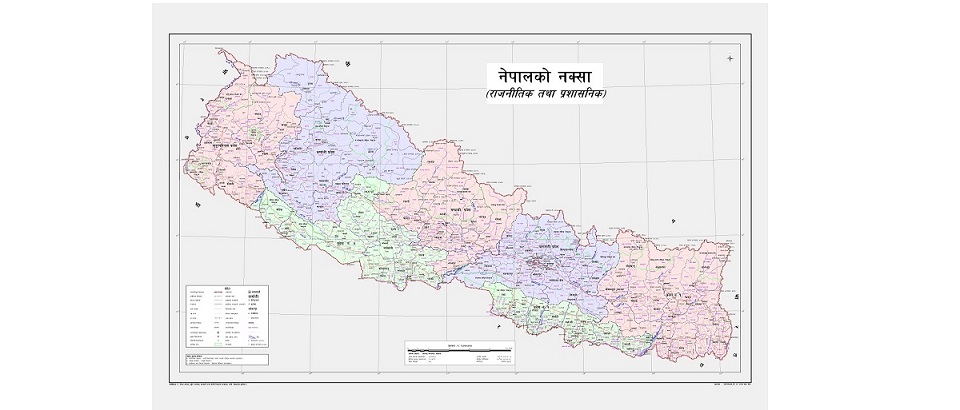
OR
When it comes to territorial integrity, Madheshis have no ifs and buts
Published On: June 2, 2020 01:40 PM NPT By: Jivesh Jha

Madhesi leaders have never articulated Madheshi people’s commitment to preserve territorial integrity of the country. Truth is when our land is encroached upon it hurts and agitates Madhesi people.
Though Madheshi leaders are putting various conditions to vote for getting the new map, that includes Nepali territories of Limpiyadhura-Lipulekh-Kalapani (LLK) region of Nepal in it, endorsed through the parliament, here in Tarai Madhesh there is a huge resurgence of public support in favour of the government on this particular issue.
Why is this happening?
India and Nepal share a similar geography, language and culture. There is much the people of the two open-border countries can explore in benefits if we have the best friendly relations.
Yet, Madheshi people have often suffered humiliation at the hands of India’s Border Security Forces (BSF) deployed along the Indo-Nepal border. They often misbehave with the Madheshi people who visit the bordering towns to meet their relatives or for marketing purpose. The ill-treatment at the hands of BSF fuels so much resentment in us.
India has started constructing bigger dams and embankments across the border to divert rivers flowing from Nepal through big damns towards those canals. It aims to obstruct the natural flow of rivers which ultimately brings disaster every monsoon. There is not a single year when flood has not eroded or inundated hundreds of bighas of Nepal’s land and washed away hundreds of thousands of homes of Madheshis. The embankments are built largely in the buffer zone or no man’s land between the two countries. During rainy season, which lasts from June to September, rivers overflow and rush towards bordering districts of India but India’s embankments obstruct the natural flow of waters. Indian authorities ensure the safety of Indian population from unprecedented floods but also seem to ensure that Madheshis suffers the loss.
The BSF is engaged in erecting more than 15 feet tall dams plus roads along Indo-Nepal border. Such constructions are of strategic importance. BSF camps are there in every two-five kilometres, view tower in every two kms and there are bigger dams and taller roads for the passage and movements of BSF vehicles or other constructions of strategic importance. Indian authorities seem committed to lock the Indian territories with big embankments and taller roads with artificial creation of reservoirs alongside Nepal. This ‘novel’ fencing raises the question mark on entire open-border dynamics.
It is to be noted that these constructions are inconsistent with international laws. Every convention obliges a sovereign state to capitalize developmental activities in such a manner that does not harm the neighbouring states.
Moreover, the Nepali citizens from the hills and the plains often visit bordering towns for marketing purpose as they find goods and grocery items at reasonable price. Nepalis also become taxpayers in India with each transaction. Madheshis are dependent on Indian markets for fertilizers, foods, medical treatments and other essential commodities. There are many villages in Province-2 which lack road connectivity with Nepali towns. However, they have access to Indian towns without any hassle. For instance, my own village Bathnaha of Mahottari is not fortunate enough to have access of road or transport connectivity with Nepali market or Jaleshwar, district headquarters. Bathnaha dwellers are dependent on Indian market for fertilizers, medicines and other daily needs.
Indian defence personnel often obstruct the construction of roads in Nepal, stating that the infrastructure is being constructed by encroaching on the no-man’s land. Their paramilitary forces come at the construction site and ask the Nepali side to stop the work. Recently, Indian paramilitaries obstructed the construction of roads in Thori, Parsa. Indian government is busy in constructing roads in no man’s land or setting up paramilitary camps in broad daylight. For instance, Bhittamore-Patna highway witnesses construction of road near Sursand village at no man’s land. Indian bus stand is established at no man’s land adjoining Jatahi, Dhanusha. Susta’s land is massively encroached on by Indian paramilitaries.
Madhesi people have seen for themselves and experienced the pains of having their lands encroached on by the other side. They do not hesitate to put their own lives at risk to protect the land. One only has to remember the Tilathi incident that occurred in 2016 in Saptari district. When the locals saw that their land was encroached on they took the matters in their own hands.
Madhesi leaders have never articulated Madheshi people’s commitment to preserve territorial integrity of the country. Truth of the matter is whether it is in Susta or Limpiyadhura-Lipulekh-Kalapani (LLK) region or anywhere within the boundary of Nepal, when our land is encroached upon or occupied by the other side, it hurts and agitates Madhesi people as much as it hurts the folks from the hills and the mountains. This is something Kathmandu as well as New Delhi need to understand well.
You May Like This

Madhesi parties mulling to join Oli govt if UML agrees to amend statute
LAHAN, Dec 25: A fresh debate has begun within the two Madhes-based parties, which have emerged as the fourth and fifth... Read More...

PM again woos Madhesi parties to no avail
KATHMANDU, March 2: Prime Minister Pushpa Kamal Dahal has clearly told the agitating Madhes-based political parties that it has now become... Read More...

Madhesi Medical Association dissents Dr KC's hunger strike
KATHMANDU, July 18: The Madhesi Medical Association has expressed dissent against the fast-unto death strike staged by Dr Govinda KC... Read More...




Leave A Comment